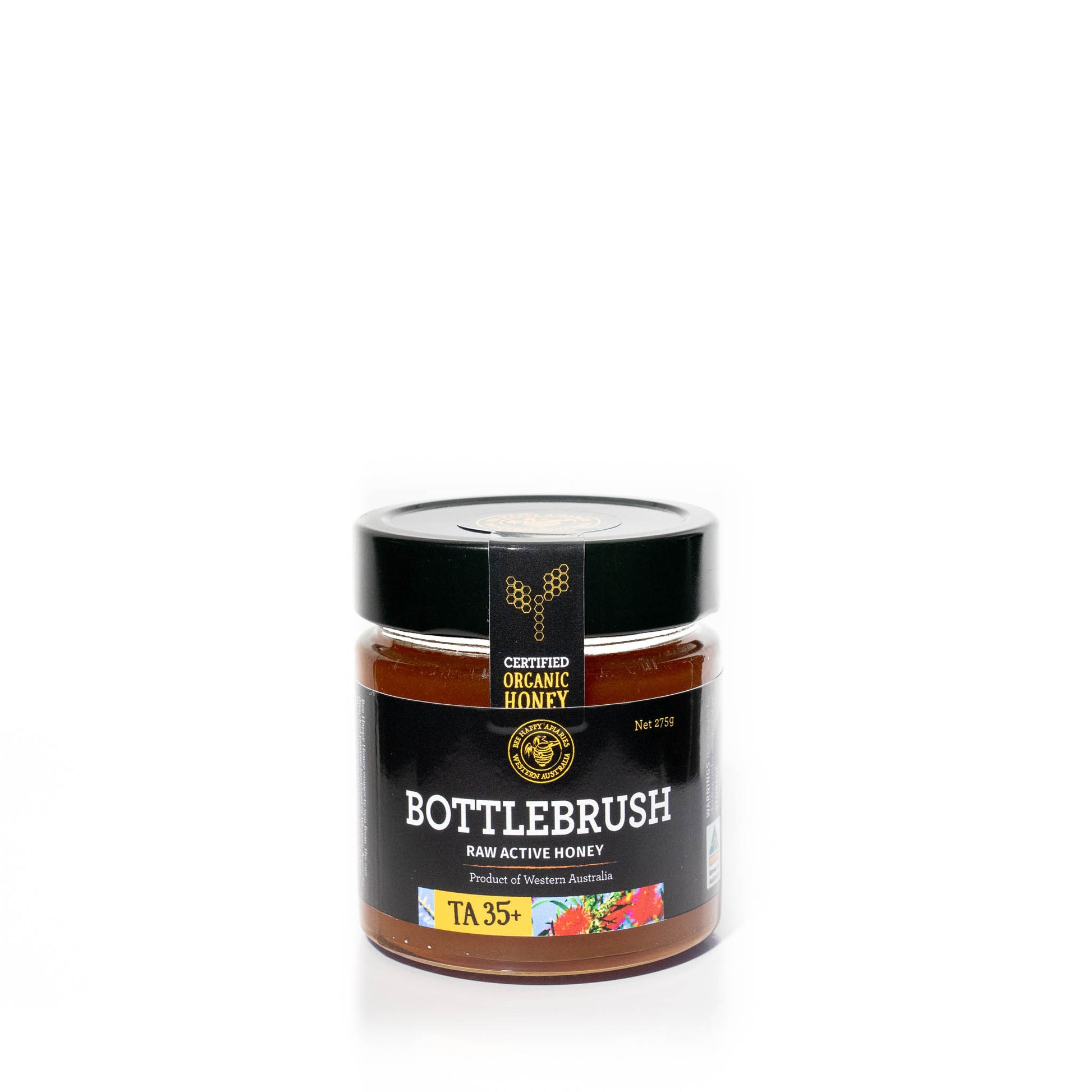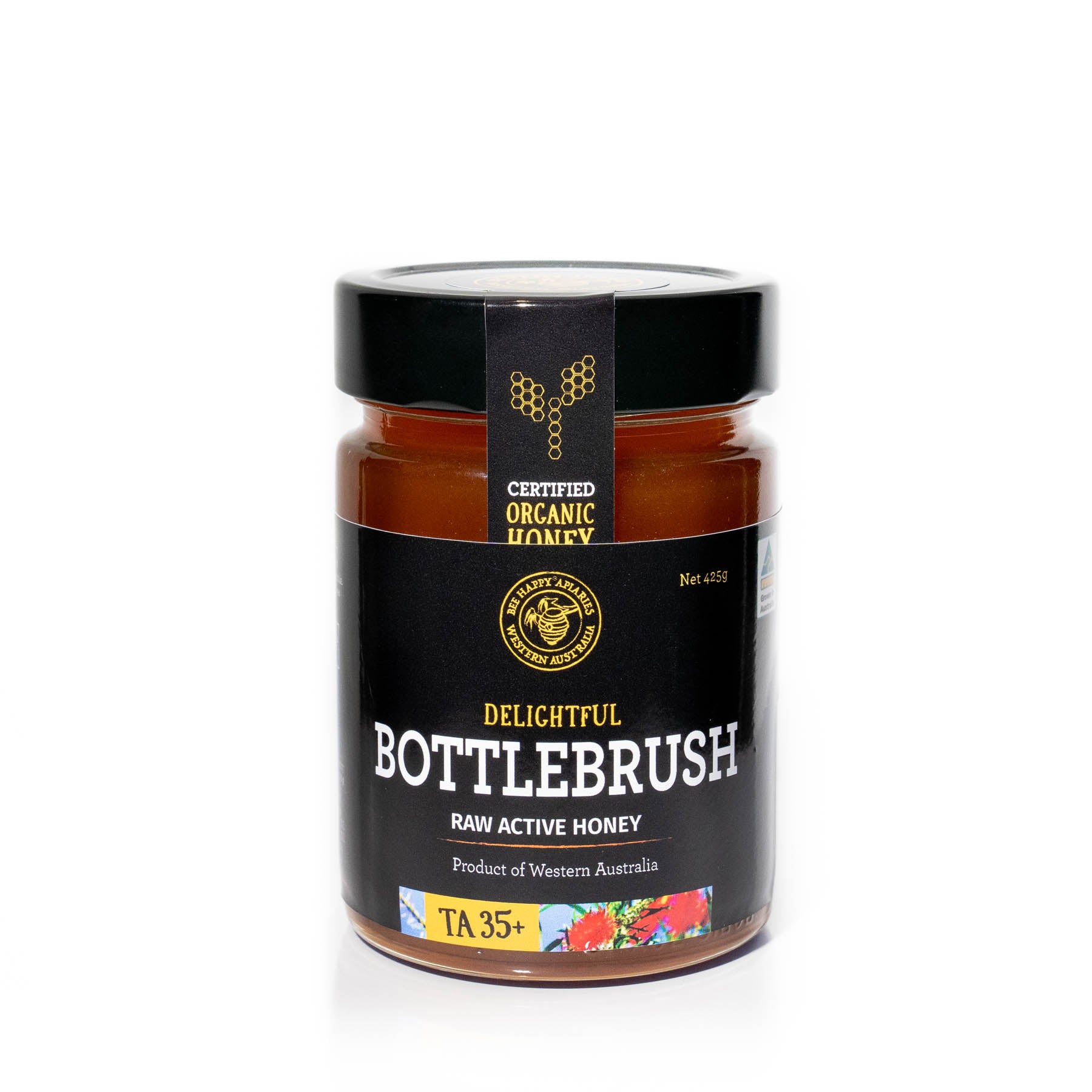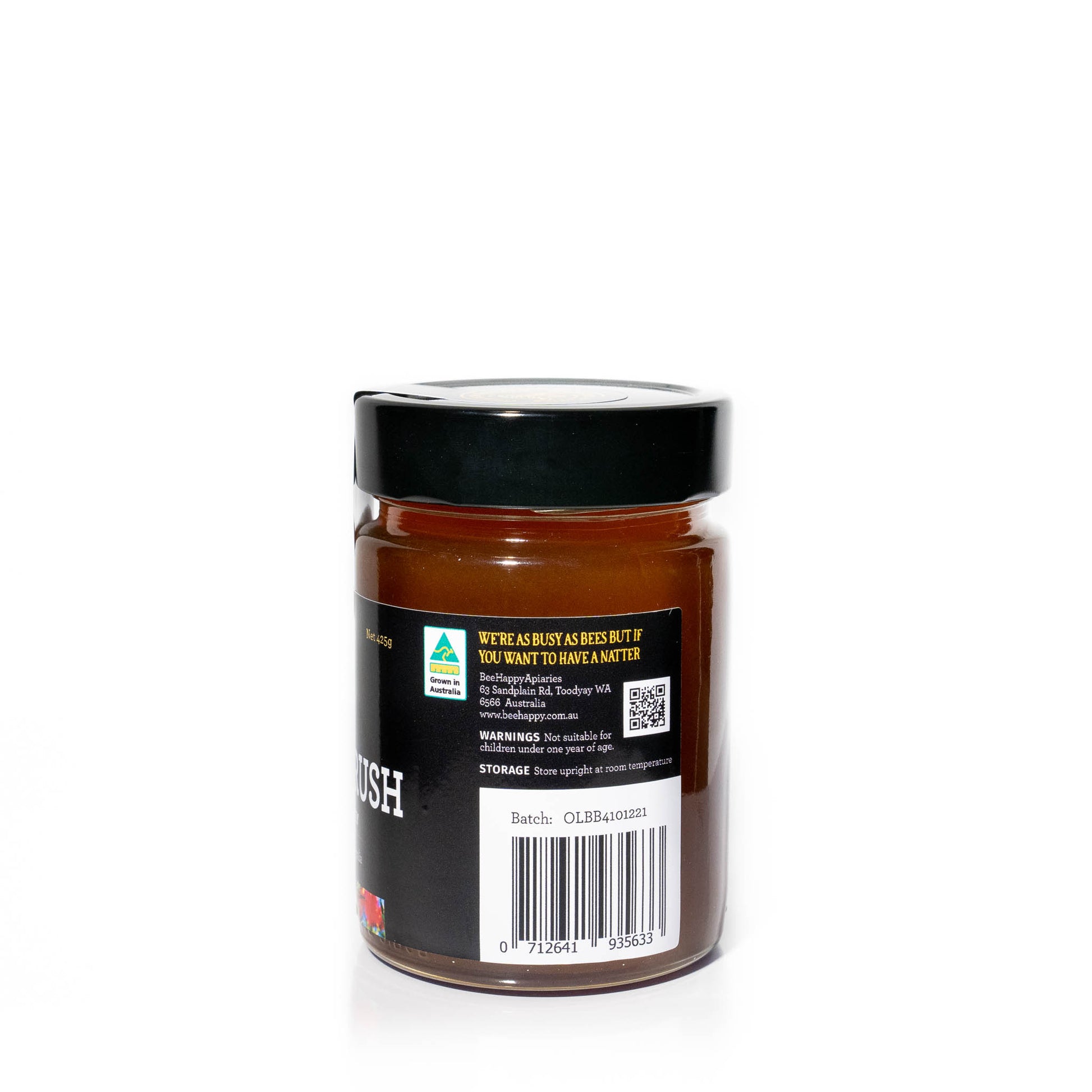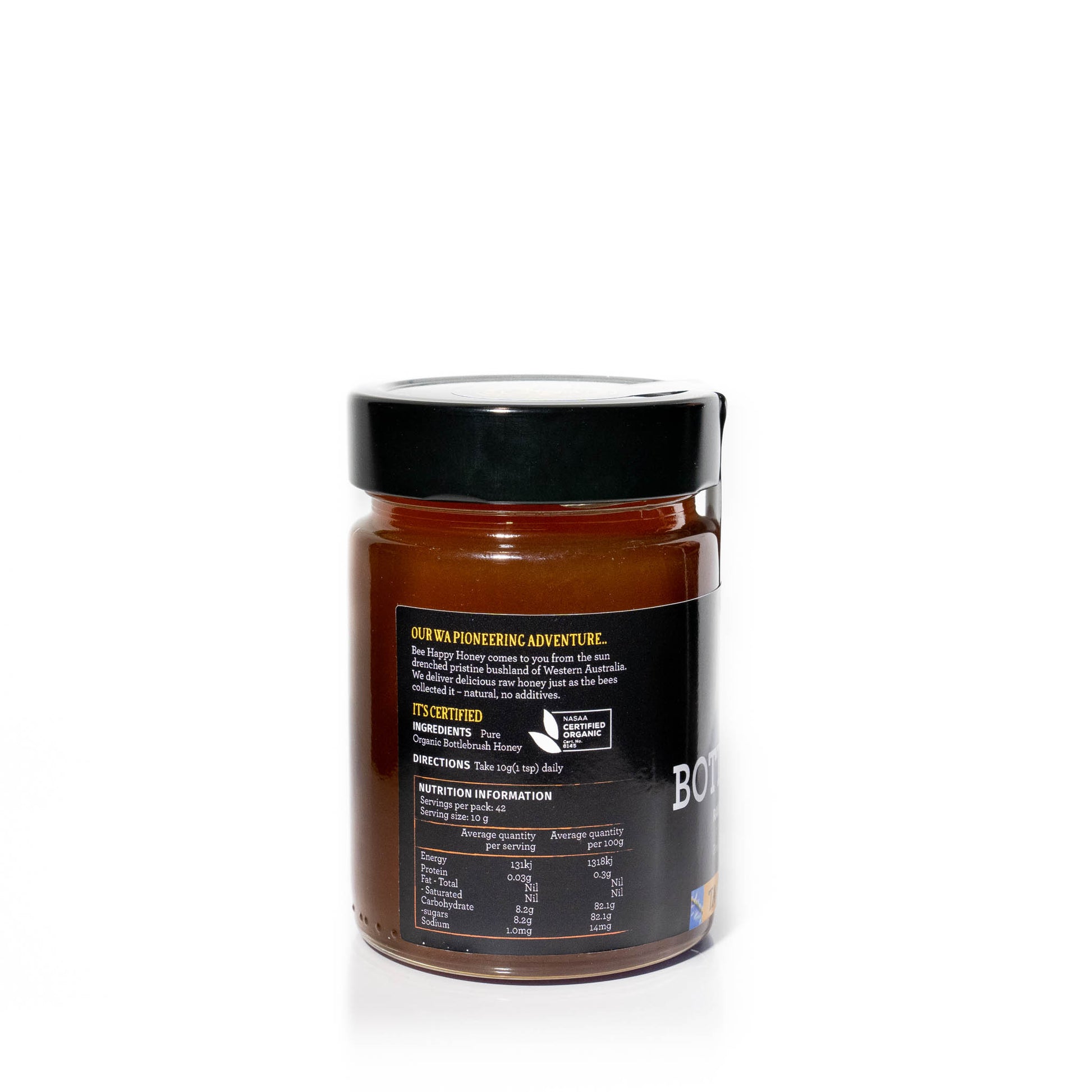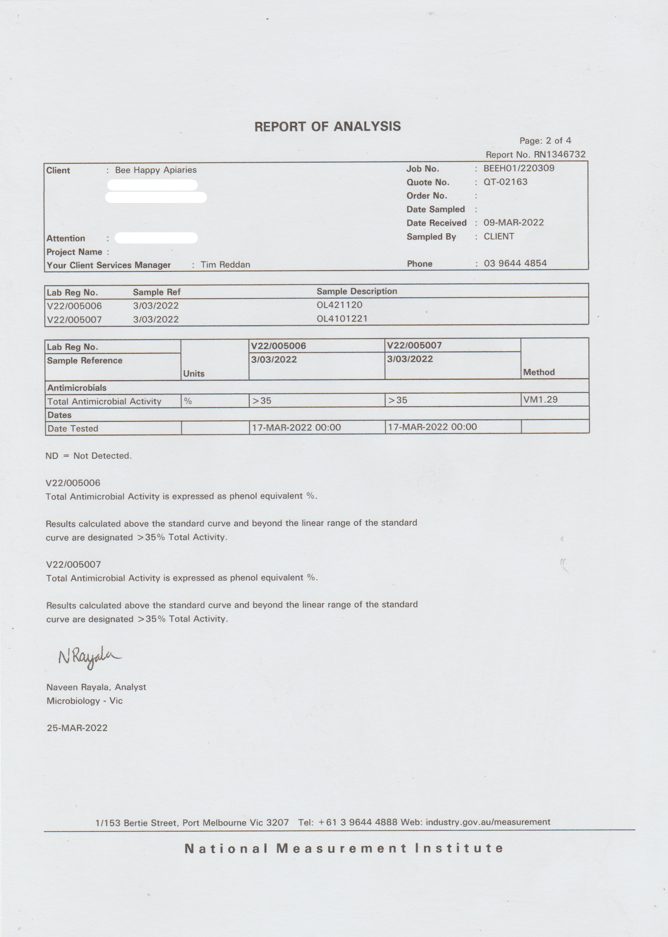Bee Happy Apiaries
Bee Happy Apiaries | Certified Organic Bottlebrush TA35+ Active Honey
Bee Happy Apiaries | Certified Organic Bottlebrush TA35+ Active Honey
Couldn't load pickup availability
Producer: Bee Happy Apiaries are long-standing family of bee-keepers, Current owners are 3rd generation apiarists who proudly carry on their family legacy. Bee Happy are based in Toodyay, WA with hives across the state.
Product Information: Sourced from the One-sided Bottlebrush (Calothamus Quadrifidus) along the coastal plains near Lancelin Western Australia. The myrtle usually flowers around the October-November period of the year. Bee Happy Honey has not been heat treated or finely filtered thus maintaining its natural nutritional magic.
Taste Profile: Bottlebrush produces a beautiful smooth and subtle honey with caramel notes.
Rating & Certification:
- Independently tested for its antimicrobial activity levels at certified laboratories within Australia. This batch (V22/005007) has recorded a significant result TA >35+ which is the highest rating awarded by the National Measurement Institute, an Australian government body
- Certified organic with NASAA (National Association for Sustainable Agriculture, Australia).
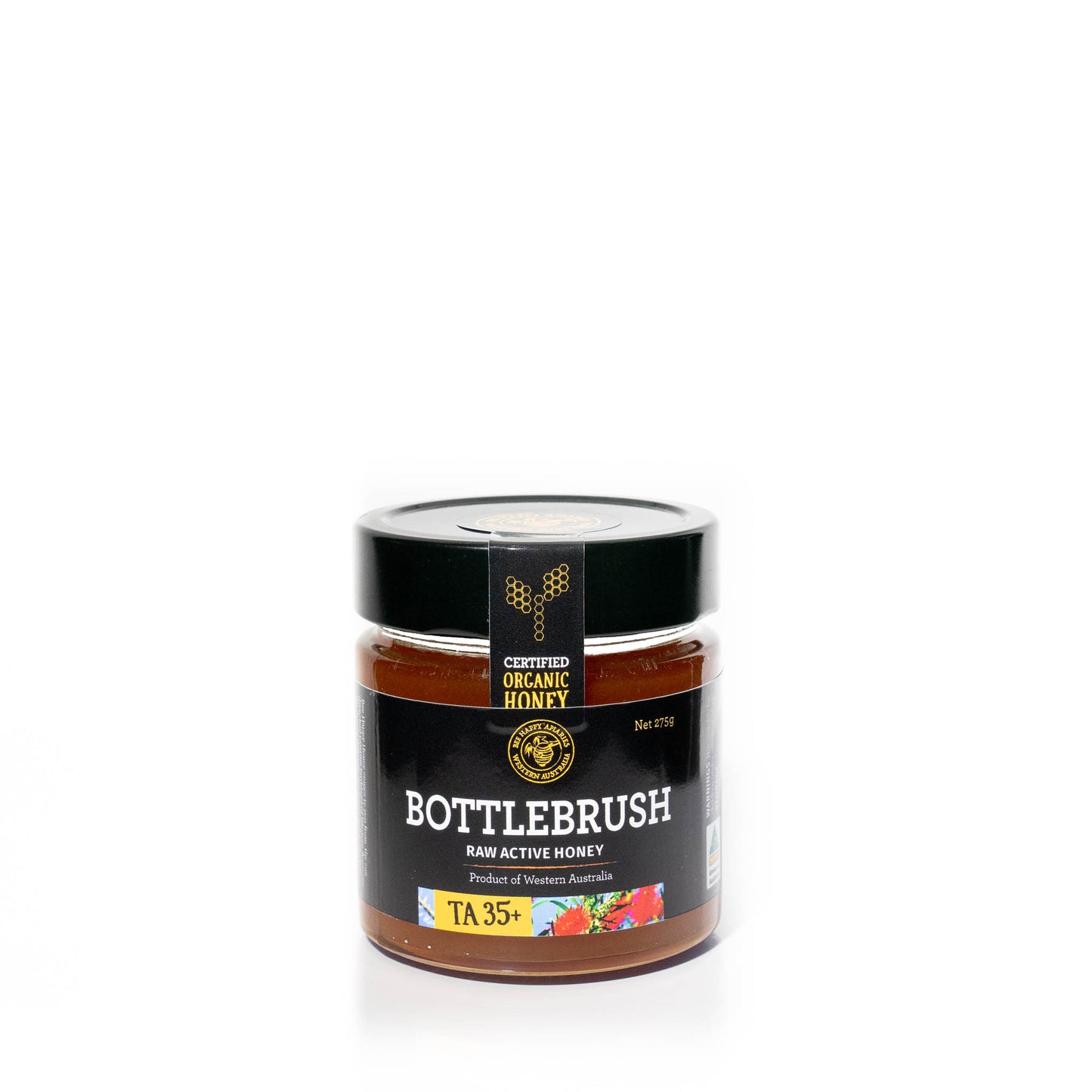
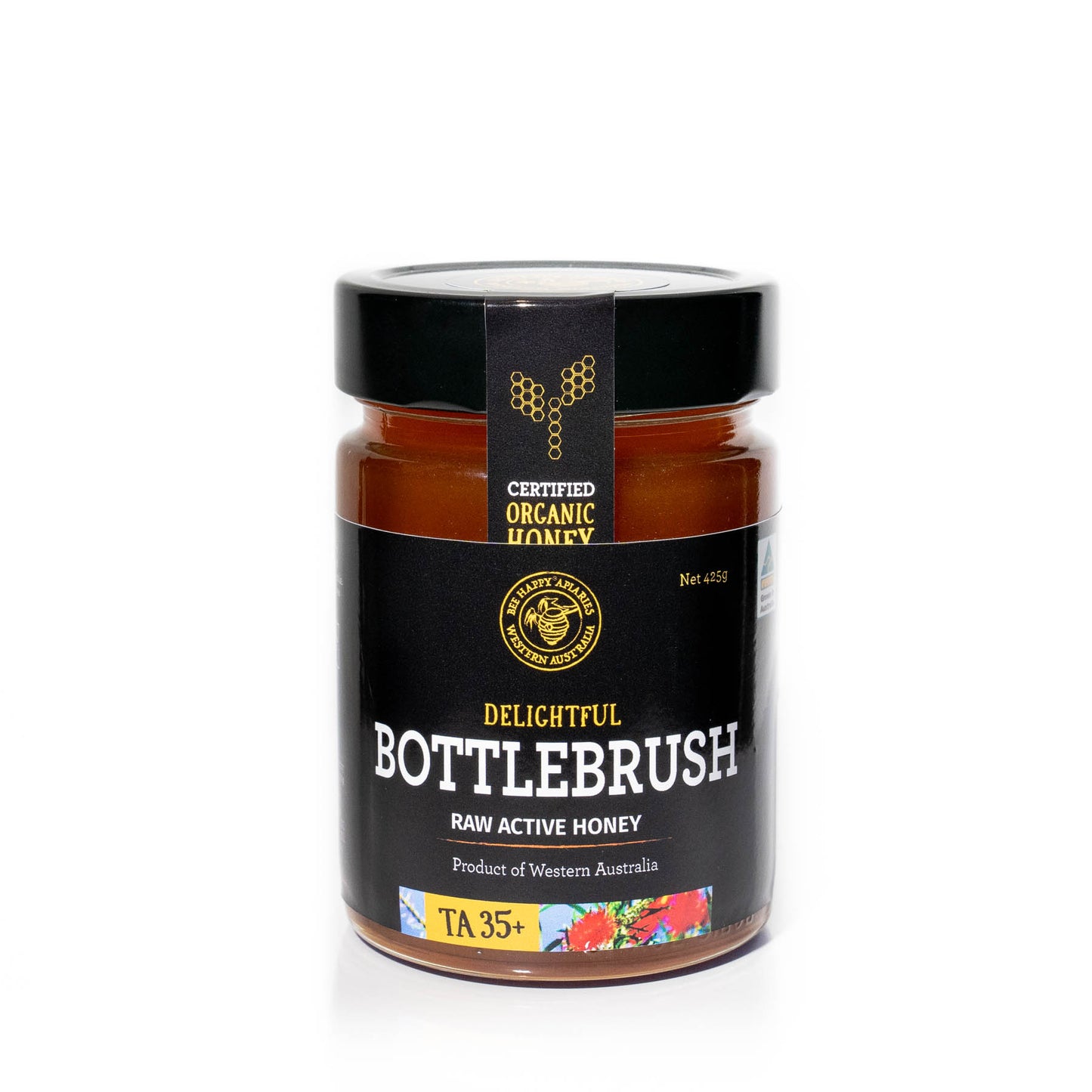
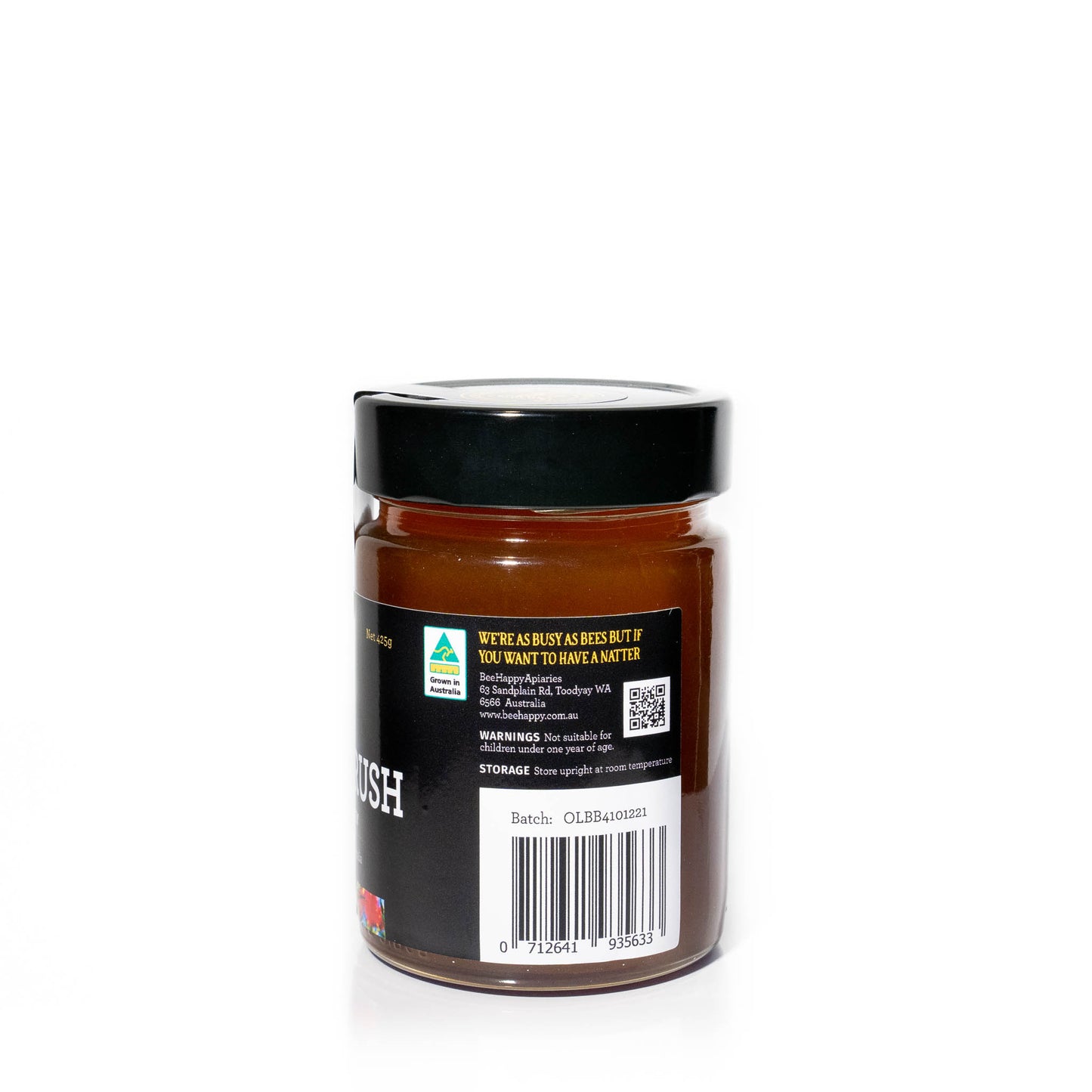
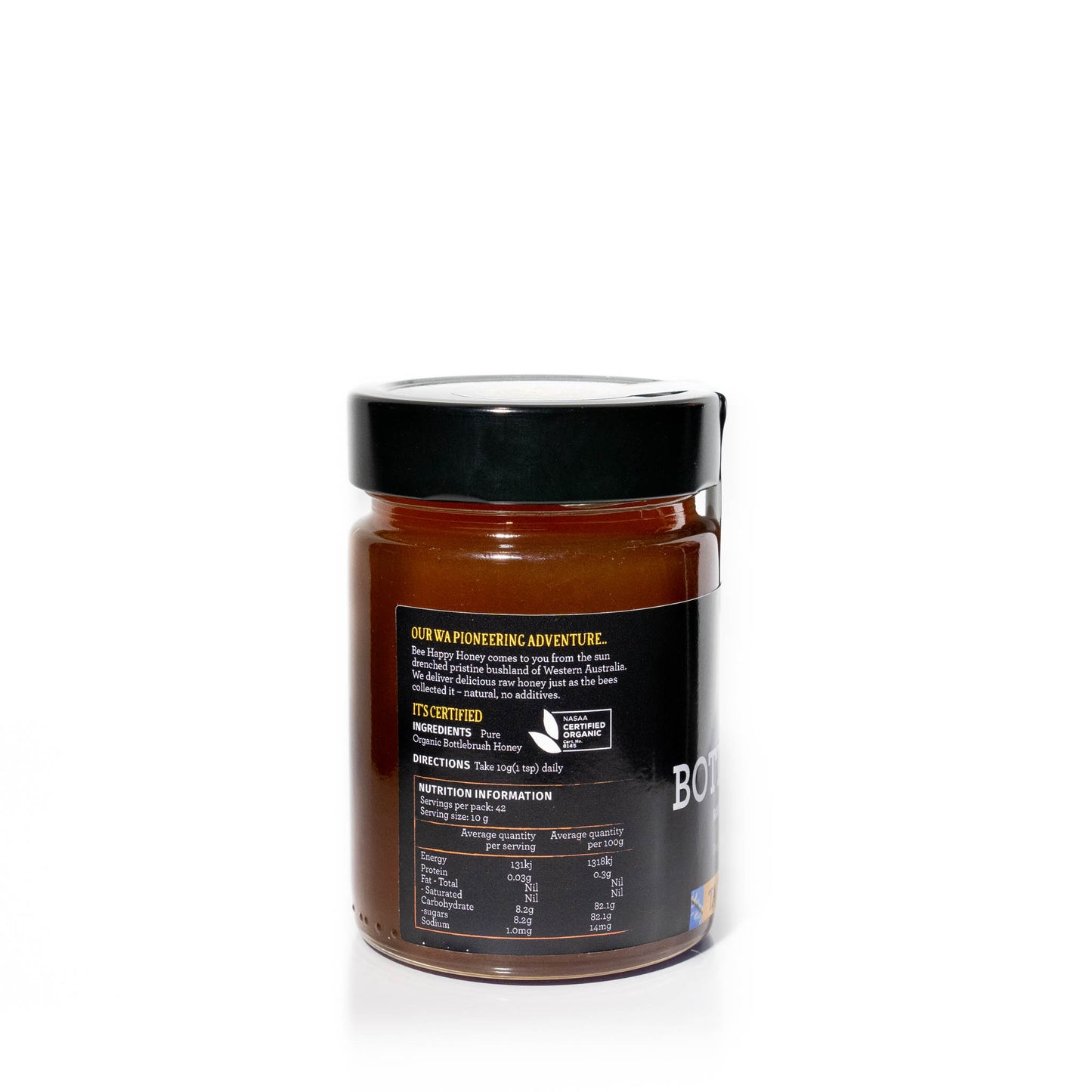
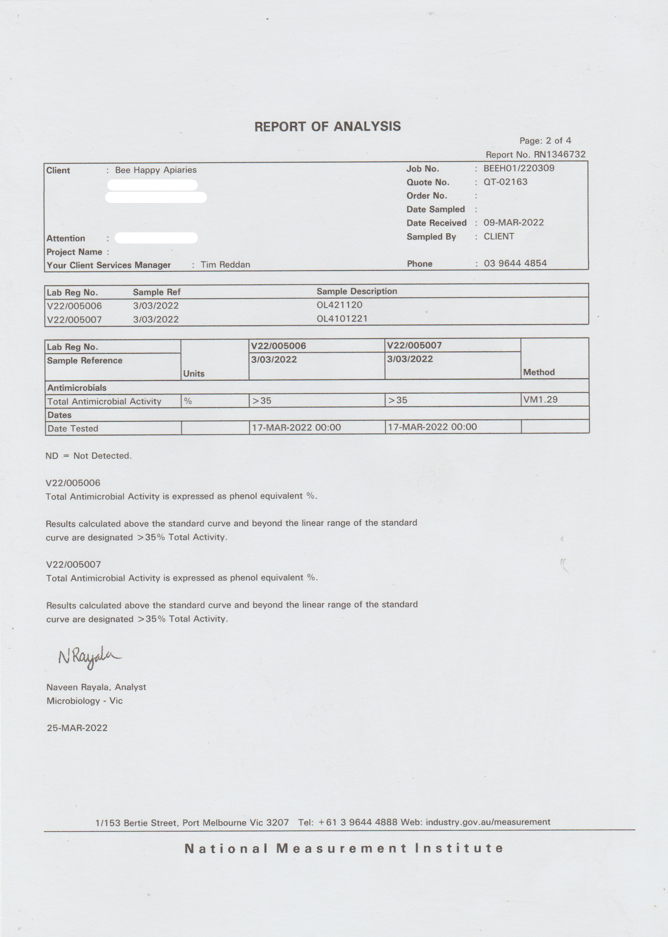
Tell me more
In A Nutshell
What is active honey?
Honey is active when it possesses antibacterial and/or antimicrobial properties. Best practice within the industry is for the activity levels to be tested and certified by independent laboratories. Some commonly known active honeys are Jarrah and Marri (which are both antibacterial and antimicrobial) and Manuka (antibacterial only).
How to intepret TA ratings ratings?
Total Activity (TA) is a measure of the level of activity of the natural enzymes in the honey. The higher the TA, the stronger the antibacterial and antimicrobial activity levels. In other words, the higher the rating, the better it is in fighting bacteria and other microbes.
How to compare TA rating with UMF and MGO ratings?
We've made a simple comparison table for you here. With this table, you may ascertain which honey is the best for you based on ratings and dollar value. For example, you may find a 250g jar of Manuka UMF 23 sets you back by $169, whereas a 250g jar of Jarrah TA 35+ (a higher activity rating) is available to you at $46.

